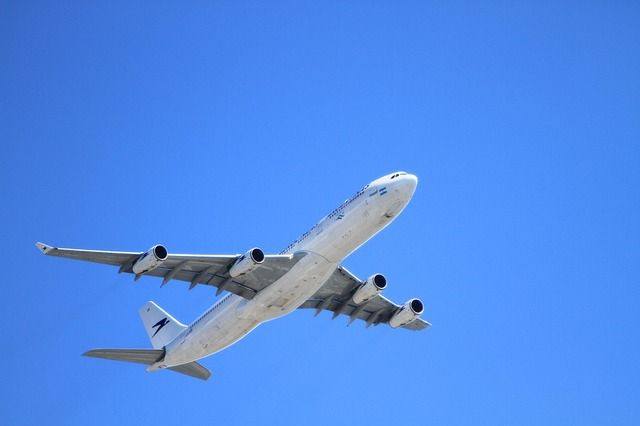What Is Turbulence? How To Not Let JetBlue Severe Turbulence Fuel Your Fear Of Flying

At least 24 passengers and crew members were taken to the hospital for evaluation after a JetBlue flight experienced extreme turbulence Thursday evening. None of the passengers and crew sustained any life-threatening injuries and all are expected to make a full recovery, but the event does make us question: What is turbulence anyway, and how dangerous can it really get?
What Is Turbulence?
Turbulence occurs when natural weather factors, such as thunderstorms, wind, mountain ranges near the aircraft, and air currents disturb the airplane flight and cause mild to violent shaking in the aircraft, CBC reported. Different types of weather patterns cause different types of turbulence; minor turbulence can be expected in nearly every flight.
“Every day I fly, I expect a small amount of turbulence, just as I’d expect the odd bump in the road on the drive to work,” British Airways pilot Steve Allright told The Telegraph. “Turbulence is uncomfortable but not dangerous. It is part of flying, and is not to be feared.”
The most common type of turbulence is Clear Air Turbulence (CAT). This is caused by fast-flowing jet streams mixing with slower moving air. A severe thunderstorm can cause violent turbulence, although pilots tend to avoid flying in thunderstorms for that very reason. The most severe turbulence is often attributed to a combination of heat, heat streams, and flying over mountain ranges, CBC reported. According to CNN weather producer Michael Guy, the reason for yesterday’s extreme turbulence was a “ frontal boundary moving across the central plains that caused bad weather conditions in that region at the time of the turbulence,” CNN reported.
Are They Dangerous?
Although turbulences are very common, they are rarely dangerous.
“In a flying career of over 10,000 hours, I have experienced severe turbulence for about five minutes in total,” explained Allright. “It is extremely uncomfortable but not dangerous.”
Severe turbulence may be rare, but that doesn’t mean it’s completely unheard of. In December 2015, an Air Canada flight from Toronto to Shanghai had a similar experience, with flight turbulence so extreme that the oxygen masks dropped and 21 people were injured. While death due to injuries sustained in turbulences is extremely rare, it’s not impossible. In November 2001, an American Airlines plane in New York experienced severe turbulence shortly after takeoff, and due to a combination of the turbulence and “extreme and unnecessary control inputs from the flight crew” the plane crashed and all 251 passengers and nine crew members died, AirSafe reported.
Although serious injuries and death are very rare, according to The Telegraph, any type of turbulence still should be taken seriously. It's the most common cause of injury to air passengers: in the U.S., it causes an estimated 58 injuries each year. This is exactly why you should always follow the captains' instructions whenever they turn on the “Fasten Seatbelt” sign. Unfortunately, some of the injured passengers on yesterday's JetBlue Flight 429 were not wearing a seatbelt.
"I literally grabbed her out of the air to hold her to the seat," said Derek Lindahl, a software engineer from Sacramento, describing his experience helping a fellow passenger who had not been wearing a seatbelt to CNN.
Still, as Allright explained, these types are turbulence are very rare. So rare in fact the average traveler will “almost certainly never experience it, and nor will most business people.” So relax, but, just in case, keep that seat belt fastened unless the captain had cleared you to walk about the cabin.
Read More:
Passengers Conquer Fear Of Flying At Air Hollywood Film Studio By Imitating In-Air Experiences: Read Here
Pilots Who Died From Plane Crashes Often Under The Influence Of Impairing Medication Or Illicit Drugs: Read Here



























